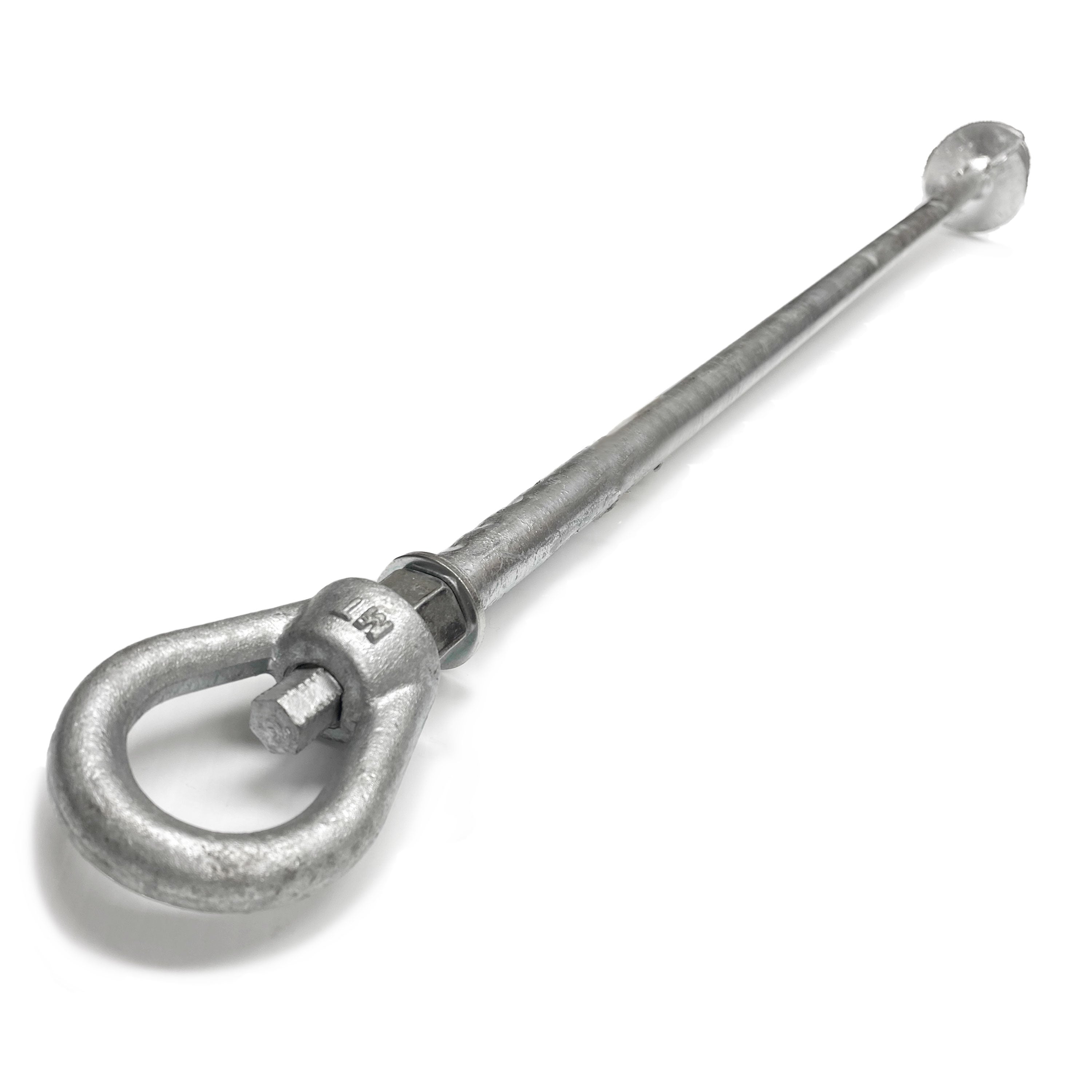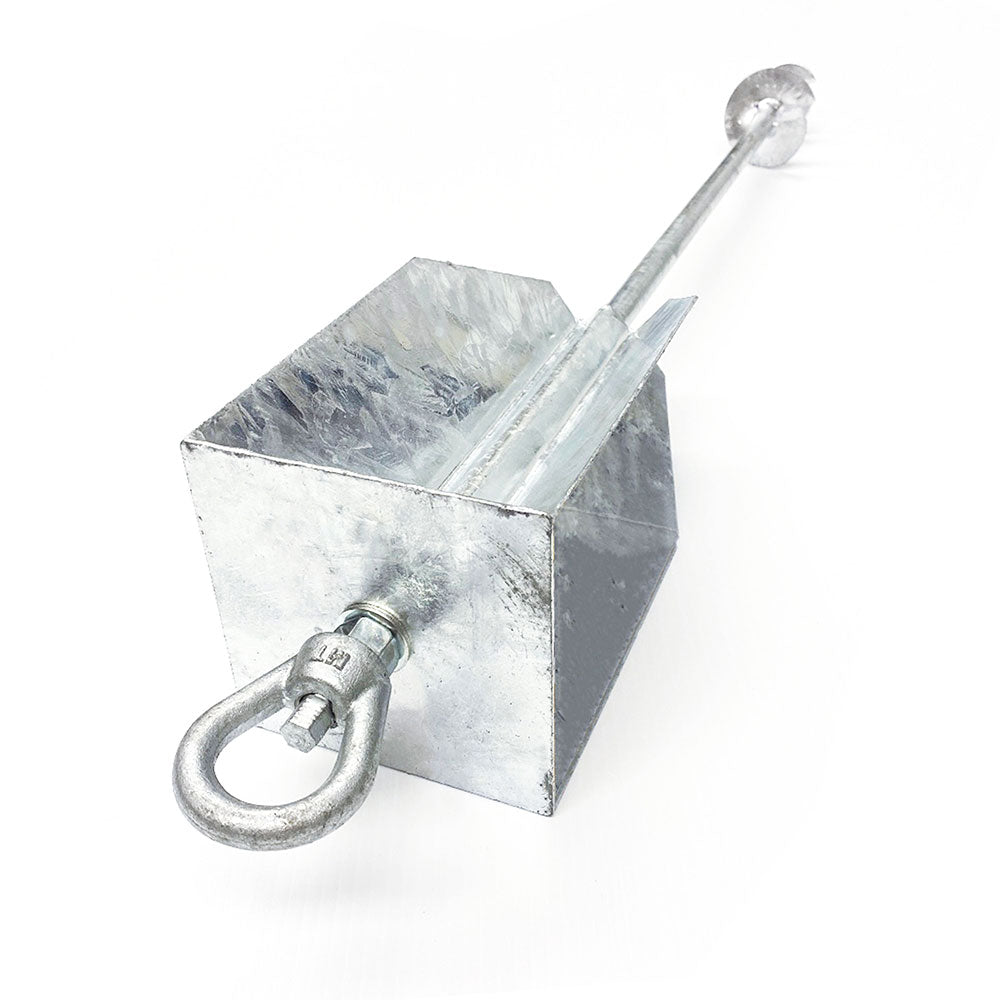How a Ground Anchor Can Boost Stability for Your Equipment
How a Ground Anchor Can Boost Stability for Your Equipment
Blog Article
Check Out the Various Kinds Of Ground Anchor for Your Next Job
When starting a building and construction or landscaping job, recognizing the various types of ground supports readily available is important to making certain both security and longevity (Ground Anchor). From auger supports, which excel in diverse soil problems, to stake supports made for temporary installations, the choices are many. In addition, concrete and screw anchors present special benefits in particular circumstances, while deadman anchors are customized for applications calling for resistance to side pressures. The selection of an ideal anchor kind can dramatically affect the overall success of your task, triggering further expedition into their corresponding benefits and applications.

Auger Anchors
Auger supports are a popular option in various building and construction and landscaping tasks because of their unique design and reliable anchoring capacities. These anchors are composed of a helical screw-like shaft that is driven right into the ground, allowing for a stable and safe hold. The spiral layout assists in simple setup and makes the most of resistance versus lateral forces, making auger anchors especially effective in applications such as fencing, temporary structures, and disintegration control.
The setup procedure of auger anchors is fairly uncomplicated. They can be manually or mechanically installed, depending upon the size and called for deepness. This versatility permits their usage in diverse dirt conditions, from sandy to clayey terrains. Auger anchors can be conveniently eliminated and recycled, which includes to their cost-effectiveness and sustainability.
One of the significant advantages of auger supports is their capacity to distribute loads equally across the bordering soil, minimizing the danger of soil disturbance and lessening environmental impact. Additionally, they are much less at risk to loosening or heaving in time contrasted to conventional securing approaches. Auger anchors are an exceptional selection for jobs requiring resilient and trusted anchoring remedies.

Risk Anchors
When it pertains to safeguarding structures in a variety of exterior applications, stake supports supply a simple and reputable option. These supports are commonly created from long lasting materials such as steel or light weight aluminum, made to withstand environmental tensions while supplying ideal security. Their easy design enables quick installment, making them a perfect selection for long-term or temporary anchoring needs.
Risk anchors are particularly useful in safeguarding tents, covers, and other light-weight frameworks versus wind and weather. They function by being driven into the ground at an angle, creating a strong hold that resists pull-out forces - Ground Anchor. The effectiveness of risk anchors depends upon numerous elements, including soil type, moisture content, and the angle of setup
For included safety, lots of risk supports include add-on points for bands or ropes, permitting tension adjustments as essential. In applications such as landscape design or building and construction, they can efficiently stabilize equipment or structures on unequal terrain. Generally, stake anchors offer a cost-effective and functional remedy for securing numerous outside setups, making them a favored option for contractors and DIY enthusiasts alike.
Concrete Anchors
Concrete anchors offer a robust service for securing frameworks to concrete surfaces, ensuring stability and safety and security in different applications. These anchors are vital for projects ranging from residential constructions to large-scale commercial setups. They are available in different kinds, consisting of expansion supports, adhesive anchors, and undercut supports, each designed for specific load requirements and ecological conditions.
When installed,Expansion supports rely on mechanical devices to grip the concrete. They are suitable for medium to redirected here sturdy applications. Glue anchors use high-strength epoxy or material to bond the support to the concrete, offering exceptional load-bearing capabilities, particularly in broken concrete circumstances. Undercut anchors create an unique form within the concrete, providing exceptional holding power, specifically in applications where tensile tons are common.
When implemented properly, concrete supports considerably improve the architectural integrity of numerous projects, making them important in modern-day construction navigate to these guys methods. Understanding the certain requirements of your project will certainly help in picking the right type of concrete support for the task.
Screw Anchors

Screw supports are a versatile attaching remedy that can be effectively used in a selection of applications where typical concrete supports may not be sufficient. These supports contain a helical design that allows them to be conveniently driven right into the ground, making them optimal for use in dirt and other substratums. Their one-of-a-kind framework gives exceptional holding power and resistance to pull-out forces, making them suitable for many jobs, from landscaping to architectural support.
Among the main advantages of screw anchors is their simplicity of setup. They require very little devices and can typically be installed without the need for excavation, which saves both time and labor prices. In addition, screw supports can be eliminated and recycled, offering a sustainable remedy for temporary applications.
Screw anchors are particularly valuable in areas where dirt problems are challenging, such as loosened or sandy dirts. Their ability to be mounted at varying midsts permits modification based on certain project demands. On the whole, screw anchors offer a reliable and trustworthy anchoring method, making them an exceptional selection for contractors and engineers looking for effective options for their jobs.
Deadman Anchors
Deadman anchors act as a robust service for supporting frameworks in challenging problems, specifically where typical anchoring approaches might fail. These anchors include large, heavy objects hidden underground, which develop resistance versus side pressures. The style generally includes a straight part, such as a block of concrete or a metal plate, hidden in the soil, to which straps try this out or cable televisions are connected.
The effectiveness of deadman supports depends on their capacity to disperse loads over a bigger area, minimizing the danger of failing in unsteady soil conditions. They are specifically helpful in applications such as retaining walls, short-term frameworks, and incline stablizing, where dirt movement can endanger the honesty of the structure.
Installment of deadman supports needs mindful planning to ensure they are positioned at the correct deepness and positioning, optimizing their load-bearing ability. While they might call for even more labor and product than lightweight supports, their reliability in damaging conditions makes them vital for lasting tasks. Moreover, deadman anchors are functional and can be adjusted to numerous applications, making them a go-to option for designers facing distinct obstacles in their tasks.
Conclusion
In recap, choosing the appropriate sort of ground support is crucial for making certain stability and safety in numerous projects. Auger supports excel in varied dirt problems, while stake anchors match temporary applications. For concrete surface areas, growth and adhesive supports provide trusted choices, and screw supports provide convenience in tough terrains. Deadman anchors are specifically reliable in resisting lateral pressures for keeping wall surfaces. Careful consideration of these alternatives will improve job results and architectural stability.
Furthermore, concrete and screw supports present special benefits in details situations, while deadman anchors are customized for applications calling for resistance to side pressures - Ground Anchor.Auger supports are a popular choice in various building and landscaping projects due to their one-of-a-kind design and efficient securing capacities. They come in different types, consisting of expansion supports, adhesive supports, and undercut anchors, each designed for specific lots demands and environmental conditions
Adhesive supports utilize high-strength epoxy or material to bond the support to the concrete, using exceptional load-bearing abilities, particularly in cracked concrete situations. In general, screw anchors offer a reputable and efficient securing method, making them an outstanding option for designers and specialists seeking efficient options for their jobs.
Report this page